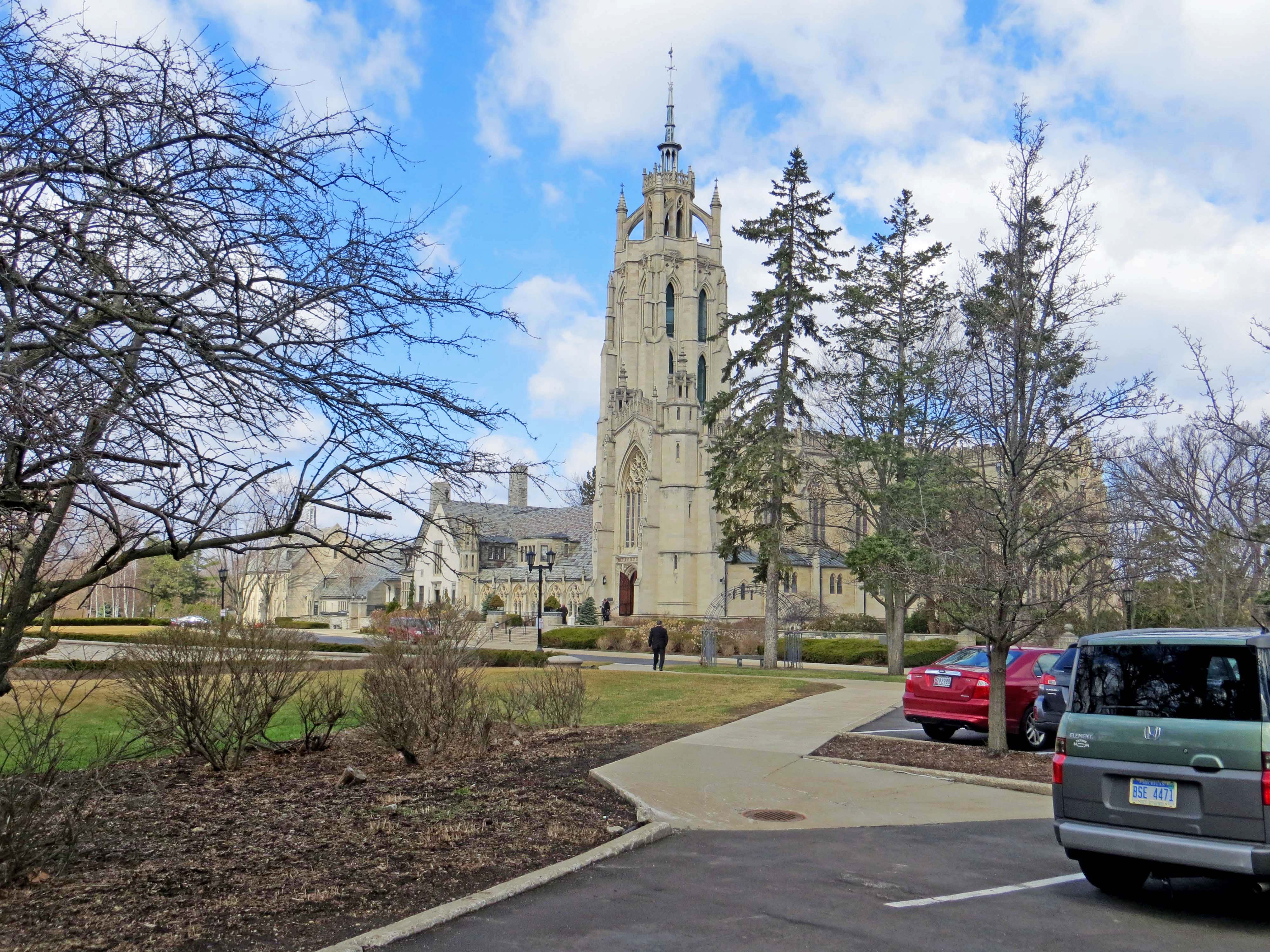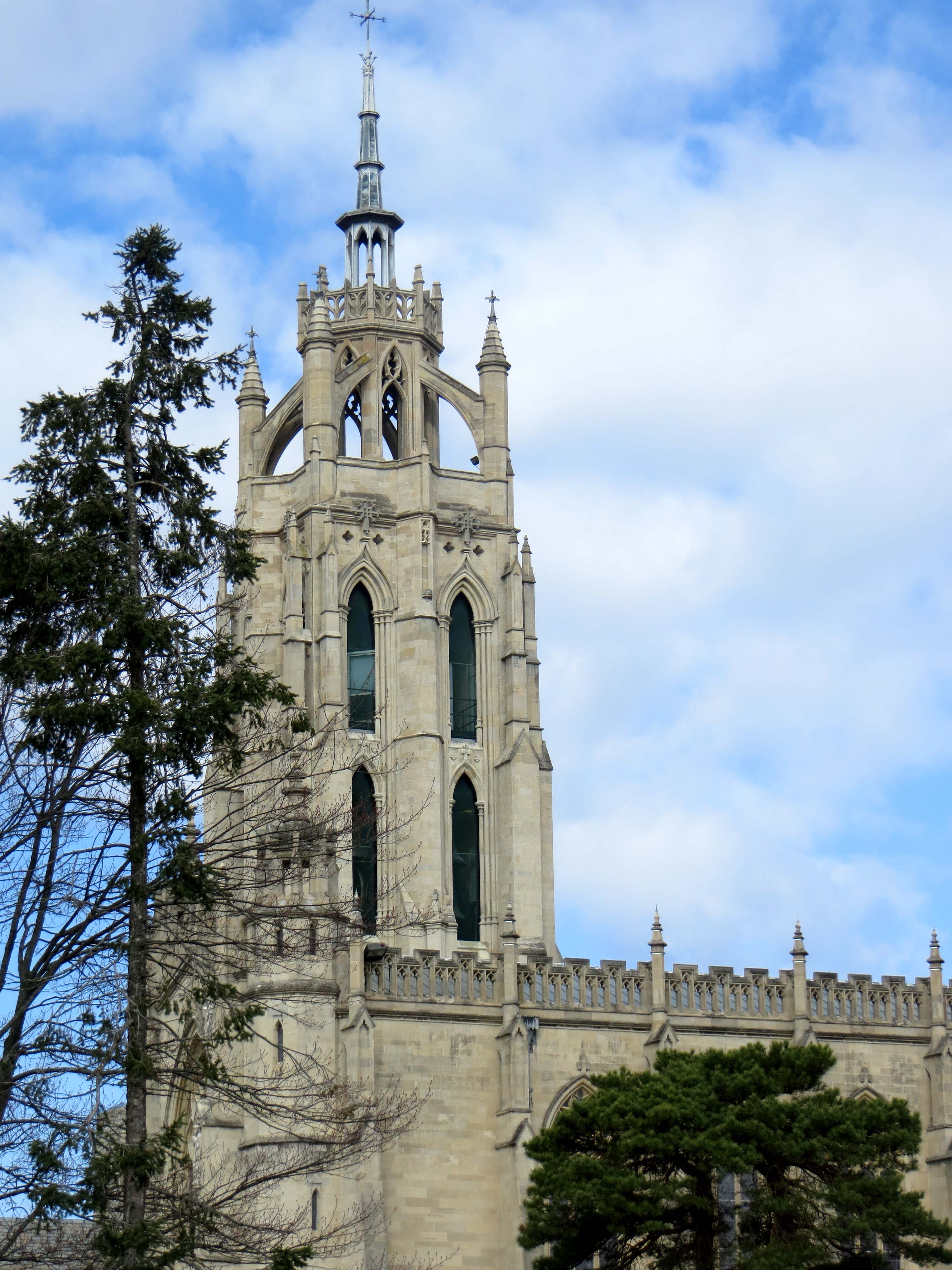

People who possess much more wealth than they can readily spend have interesting decisions to consider. Some—such as Henry Ford—establish institutions that last long after their own lives as he did with Greenfield Village. Others set up philanthropic agencies as did Detroit resident
S. S. Kresge. And others, including James Scott, donate their wealth for magnificent sculptures and park space as he did for the Scott Fountain and the southern acres of Belle Isle.
Colonel Edwin S. George invested in Detroit real estate. He had the good fortune to own some of the properties along Woodward between Grand Circus Park and Warren du ring the early years of the automotive boom. He erected a building there at Woodward and Hancock designed by Albert Kahn. This was once known as the Edwin S. George Building and was used, I believe, by Akron’s B. F. Goodrich Rubber Company which was my employer back in the mid-1950s. The structure is now known as the Garfield Building. In addition to real estate, Colonel George may have profited greatly from investments in the auto industry.
ring the early years of the automotive boom. He erected a building there at Woodward and Hancock designed by Albert Kahn. This was once known as the Edwin S. George Building and was used, I believe, by Akron’s B. F. Goodrich Rubber Company which was my employer back in the mid-1950s. The structure is now known as the Garfield Building. In addition to real estate, Colonel George may have profited greatly from investments in the auto industry.
By the 1920s, he had the resources to purchase at least 40 acres for his estate on Island Lake in Bloomfield Hill. He commissioned architect George Mason to design a very large mansion on this property, a structure completed in 1923. It still stands and is used by the congregation.
Colonel George was a devout Presbyterian and imagined building a massive church on his property that might serve the local Presbyterian community. Writ Rowland, of Guardian Building fame, was an underemployed architect during the Depression decade but discussed the idea of a church with Colonel George. Rowland, after all, had designed the massive Gothic Jefferson Avenue Presbyterian Church. Rowland was very intrigued by the English Gothic architecture, especially as used in the design of the Melrose Abbey in Scotland. I infer that Rowland’s design for George’s church in Bloomfield Hills resembled that Abbey. The first monastery at Melrose, Scotland was founded by St. Aiden in about 640. King David I of Scotland decided to build a large monastery on that site in 1136 and construction proceeded slowly. In about 1380, a substantial renovation and expansion of the building was started. I believe this renovation produced the Gothic structure that inspired the creation of the Kirk-in-the-Woods. The Reformation was the death knell for Melrose Abbey and the structure is now in ruins. The monks who lived here were allowed to remain so the monastery survived until 1590 just 111 years before Antoine Cadillac founded Detroit.
The Depression and World War II prevented the construction of this church but Colonel George maintained his interest. In 1947—at age 74—he donated his estate for this church. Unfortunately, his principal architect, Writ Rowland, died in 1946. Colonel George then turned to George Mason to work on the design. At this time George Mason was in his late eighties and I believe that he died about the time the cornerstone was laid. I do not know which other architects worked on this building.
Detroit’s preeminent architectural historian, W. Hawkins Ferry, summarizes his view as follows:
“Rowland found inspiration for the Kirk-in-the-Hills in the ruins of Melrose Abbey in Scotland. Here was a subtle blend of the Decorated and Perpendicular English Gothic styles with a pronounced French influence. Rising once again in its pristine glory above the verdure of Bloomfield Hills, the reincarnation of the ancient abbey is a testimony of the final triumph of Rowland in his life-long Gothic Quest. (W. Hawkins Ferry, The Buildings of Detroit: A History, Detroit: Wayne State University Press, 1968, p. 276)
Date cornerstone was laid: 1951
Date of completion: 1958
Architects: Writ Rowland and George D. Mason
Architectural Style: English Gothic
Use in 2015: Presbyterian Church
Website: www.kirkinthehills.org
Michigan Register of Historic Sites: Not listed
National Register of Historic Places: Not listed
Photographs: Gail Farley; April, 2015
Return to Religious Structures